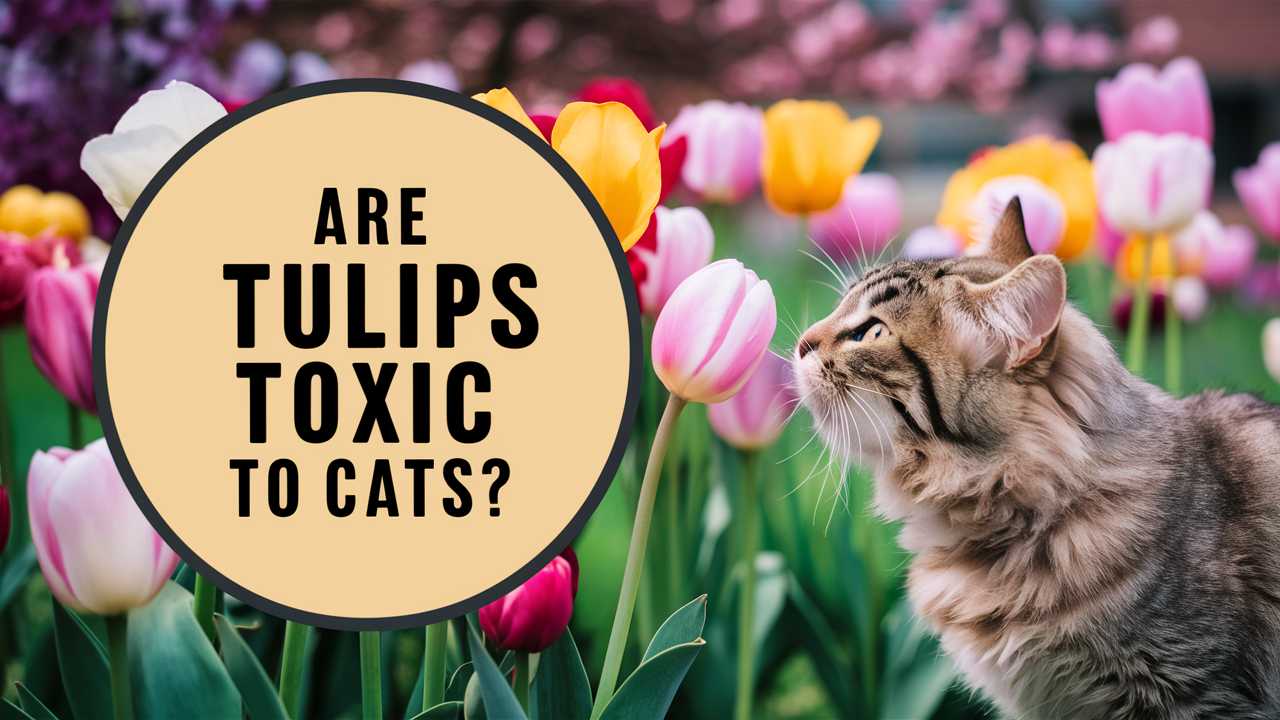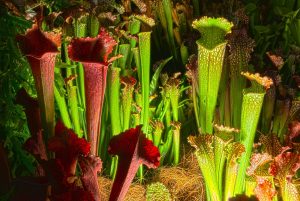In this guide, we’ll explore the relationship between tulips and our feline friends, unravel the potential risks, and discuss what to do if your cat comes into contact with these flowers.
The Toxicity of Tulips: What You Need to Know

Tulips contain compounds known as glycosides, specifically tulipalin A and tulipalin B. These substances can cause toxicity if ingested by cats, leading to a range of symptoms. While the degree of risk varies, it is important to recognize that while not all parts of the tulip are equally toxic, the bulbs, in particular, are the most dangerous.
The level of toxicity may also depend on the quantity ingested. A small nibble might not necessarily lead to serious health issues, but larger amounts can lead to more significant problems. It’s always best to err on the side of caution, as individual sensitivities can vary among cats, just as they do in humans.
Symptoms of Tulip Toxicity in Cats
If your cat indulges in a tulip feast, it’s essential to monitor them closely for any signs of distress. Symptoms of tulip toxicity can manifest in various ways. Here are some common signs to watch for:
Gastrointestinal Distress: This is often the first indicator, which can include vomiting, diarrhea, and abdominal pain. If your cat has a sensitive stomach or tends to get into trouble, keep an eye out for any unusual changes in their digestive habits.
Lethargy and Weakness: If your usually playful cat suddenly becomes lethargic and seems to lack energy, this may indicate something is wrong. Reduced activity levels can signal numerous health issues, including toxicity.
Frequent Urination: Increased urination can occur as a response to the toxins in tulips, which may also lead to dehydration if your cat is losing fluids too quickly.
Excessive Salivation: If you notice that your cat is drooling more than usual, it could be a response to the discomfort caused by ingesting toxic substances.
Coughing or Difficulty Breathing: In some cases, severe toxicity may result in respiratory issues, which should be treated as a medical emergency.
If you observe any of these symptoms after your cat has had access to tulips, seek veterinary attention promptly.
What to Do If Your Cat Ingests Tulips

If you suspect your cat has eaten tulip parts, the first step is to remove any remaining plant material from their vicinity to prevent further ingestion. Then, calmly assess the situation. If your cat shows any concerning symptoms or you know they have eaten a substantial amount of the plant, don’t hesitate to contact your veterinarian.
Your vet may suggest bringing your cat in for an evaluation. Depending on the circumstances, they may induce vomiting if the ingestion happened recently. However, immediate veterinary intervention is essential, as time can be of the essence in cases of poisoning.
If you can identify the part of the tulip that was consumed and how much, be prepared to relay this information to your veterinarian, as it will help them determine the best course of action.
Preventing Tulip Exposure for Your Cats
As a responsible pet owner, one of the best ways to protect your cat is by identifying and removing harmful plants from your home and garden. Here are some practical tips for keeping your feline friend safe from tulips and other toxic plants:
Educate Yourself on Plant Toxicity: Familiarize yourself with plants that are known to be toxic to cats. In addition to tulips, other common plants like lilies, azaleas, and certain types of ivy fall into this category. Knowledge is your best defense.
Create a Pet-Friendly Garden: If you love gardening, consider opting for non-toxic flowers and plants to ensure your cat can roam freely in your outdoor spaces without worry. Flowers like marigolds, snapdragons, and catnip are safe alternatives.
Supervise Outdoor Time: If your cat enjoys going outside, supervise them to prevent them from munching on any plants or flowers that could be harmful.
Training and Distraction: Use positive reinforcement training techniques to discourage your cat from chewing plants. Providing plenty of toys and other forms of stimulation can help redirect their chewing tendencies.
Consult Your Veterinarian: If you are unsure about specific plant safety, consult your veterinarian for guidance. They can provide you with useful information and resources.
The Importance of Regular Veterinary Care
Regular veterinary check-ups are crucial for all pets, including cats exposed to potentially toxic plants. Your vet can assess your cat’s health, help you develop a suitable diet, and collaborate with you on maintaining a safe environment for your furry friend. Furthermore, they can offer insight into safe plants, helping you create a feline-friendly sanctuary at home.
Additionally, keeping your cat’s vaccinations up to date and addressing any possible threats to their health is essential. Consider discussing the risk of common household plants and flowers during your appointments, so you can be proactive in safeguarding your cats against poisoning or allergic reactions.
Other Common Plants Toxic to Cats

While tulips may be one of the more well-known toxic plants, there are many other species that pose a danger to cats. Here are some common plants to be aware of:
Lilies: Extremely toxic to cats, even small amounts can cause kidney failure. Keep all varieties of lilies out of reach.
Philodendron: This popular houseplant contains calcium oxalate crystals that can irritate a cat’s mouth and digestive tract.
Azaleas: These flowering shrubs can lead to vomiting, diarrhea, and even heart issues in cats if consumed.
Sago Palm: While often used as landscaping plants, they are highly toxic and can cause severe liver failure.
Poinsettias: Often associated with Christmas, they are mildly toxic but can cause irritation and vomiting if ingested.
Checking your home for these and other harmful plants and removing them, if necessary, can help ensure the safety of your cat.
Conclusion: A Safe Spring with Tulips
As we usher in the beauty of spring and the blossoming of tulips, it’s essential to remember the potentially harmful effects these flowers can have on our feline companions. While tulips are a symbol of beauty and renewal, they can pose health risks to our cats if consumed.
By understanding the signs of toxicity, knowing how to respond in case of an incident, and assuming a proactive approach to keeping your home and garden safe, you can enjoy the arrival of spring with both your beloved tulips and your treasured feline friends.





